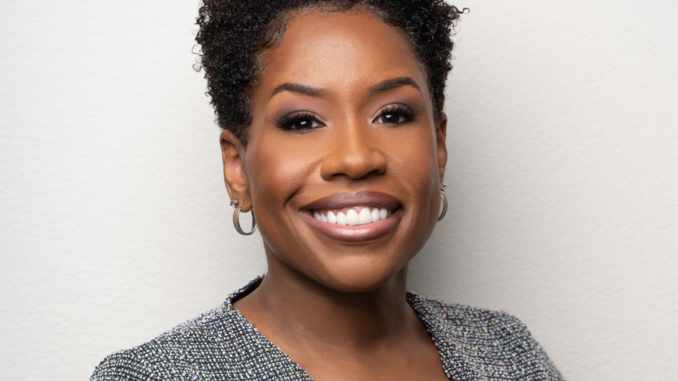
The way that someone refers to the concept of diverse communities in their interactions with consumers and housing professionals can be a key indicator about their mindset. Antiquated terminology should be checked and minimized for anyone who wants to keep up with the times.
That was one of the messages shared by Mosi Gatling, senior vice president of strategic growth and expansion at New American Funding (NAF), during a session at The Gathering by HousingWire held in Scottsdale, Arizona, this week.
“I feel that in mortgage and real estate, we are still clinging to outdated fair housing terms,” Gatling said during the session. “The question is, how relevant is that terminology in today’s world? It originated in 1968 — 56 years ago — and we’re still using it to ‘educate’ people.”
Saying that you seek to “educate” someone may come off as more combative or condescending than intended, she said. But it also makes sense to check the language used on this topic to be more understanding of the progress that has been made.
“We’re calling everyone ’minorities,’ when in reality, we just have diverse communities,” she said. “As the United States becomes more diverse, this isn’t a one-off situation or just a ’feel-good’ effort. It’s about morphing your business into something sustainable, where you can move forward and make money with the people who are actually going to buy homes going forward. These people are the new majority.”
Gatling suggested several alternative terms that can be more representative of general progress made in this area, while also being more understanding of where other people — and their perceptions of fair housing issues — come from.
”I don’t typically talk about ’prequalification.’ When discussing diverse communities, a prequalification often results in a simple yes or no,” she said. ”For many people in these groups, whether it’s veterans, Black homeownership, Hispanic homeownership or our Pride initiatives, a ’yes’ or ’no’ can be traumatic,” she said. “It could create a feeling of being shut out from homeownership.”
Instead, she says “homebuyer assessment,” since going through an assessment signals a path that can be progressed through in order to achieve qualification.
“It’s a more compassionate approach and lets them know we’re here to support them, maybe even guide them along the way,” she said. “It’s crucial to be careful with language — avoid saying ’financial literacy’ because the term ’literacy’ can imply someone is illiterate.“
In that respect, Gatling chooses the term “mortgage preparedness.”
“Say ‘education’ without actually saying it,” she advised. That way, people will not feel like they’re being called “uneducated” based on their choices of certain words.
Marketing plays a role in the situation as well, since the choice of more inclusive or diverse marketing communicates an inclusive message to a wider variety of communities, she said. The people often targeted by marketing materials can detect intentionality.
“It ‘s always been about showing a commitment to diversity, like putting a Black couple on a flyer,” she said. “But that doesn‘t really work, does it? Or putting a Hispanic couple on there — the words and the messaging don‘t align with the culture. It just doesn‘t resonate.
“Loans are being given to people from diverse communities, but there‘s no intentionality behind it. Imagine how much more powerful it would be if there were deliberate efforts, like we‘re discussing right now.”
Diverse perspectives in the decision-making process can also help in these efforts on the business side. Offering mentorship opportunities and intentioned recruiting of a diverse talent pool can be key difference-makers for an organization, Gatling said.



